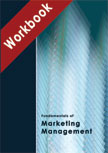Coca-Cola India in 2004 - Marketing Strategy
|
|
ICMR HOME | Case Studies Collection
Case Details:
Case Code : MKTA010
Case Length : 21 Pages
Period : 1993-2004
Pub Date : 2004
Teaching Note :Not Available
Organization : Coca Cola
Industry : Beverages
Countries : India
To download Coca-Cola India in 2004 - Marketing Strategy case study
(Case Code: MKTA010) click on the button below, and select the case from the list of available cases:

Price:
For delivery in electronic format: Rs. 500;
For delivery through courier (within India): Rs. 500 + Shipping & Handling Charges extra
» Marketing Case Studies Collection
» Marketing Communications Short Case Studies
» View Detailed Pricing Info
» How To Order This Case
» Business Case Studies
» Case Studies by Area
» Case Studies by Industry
» Case Studies by Company

Please note:
This case study was compiled from published sources, and is intended to be used as a basis for class discussion. It is not intended to illustrate either effective or ineffective handling of a management situation. Nor is it a primary information source.
Chat with us

Please leave your feedback

|
|




<< Previous
Excerpts Contd...
|
Maaza
Maaza, the mango drink constituted around five percent of the company's total volume. The mango-flavored fruit juice market was valued at about Rs 300 crore...
Advertising and Sales Promotion
In the late 1990s, CCI identified four major passions of Indian consumers - music, popular sports events, food and movies.
Coke even had its own template - Eat Cricket (or Movies or Music) Sleep Cricket, Drink Only Coca-Cola - for connecting its brand with the four obsessions...
|

|
Distribution
To reach India's 300 million soft drink consumers, CCI distributed its products in over 700,000 retail outlets serviced through trucks, converted three-wheelers, tricycles and pushcarts. In the urban areas, CCI moved bottles directly from the plant to the retail outlets. However, in the rural areas, the company used a three-tier hub-and-spoke distribution model to ensure deeper penetration...
|
|
Concluding Notes
For the fiscal year 2004, CCI along with its bottlers, planned fresh investments of about Rs 70 crore. This was in addition to its investment of Rs 100 crore in 2003.
The company planned to expand the number of retail outlets by over 23 %. According to Sanjiv Gupta, who became the president and CEO of CCI in July 2003, CCI would combine the affordability strategy with aggressive cost reduction to boost sales and profits. The company proposed to follow a high-volume, high-growth, low-cost model for sustained long-term growth...
|
Exhibits
Exhibit I: CSE Findings (2003)
|
|










